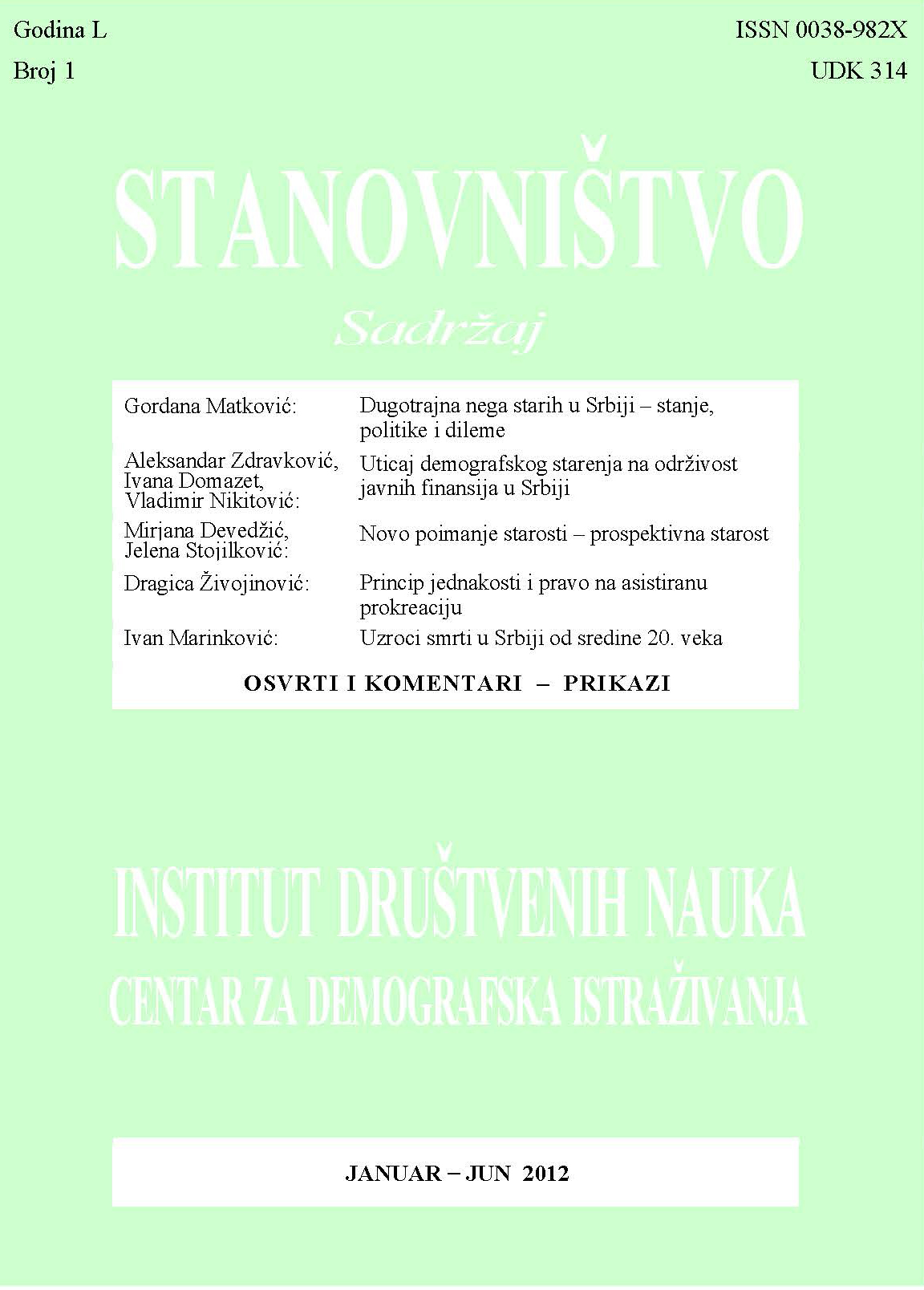Dugotrajna nega starih u Srbiji – stanje, politike i dileme
Long-Term Care of the Elderly – Current Status, Policies and Dilemmas
Author(s): Gordana MatkovićSubject(s): Sociology, Family and social welfare, Gerontology
Published by: Институт друштвених наука
Keywords: ageing; long-term care; attendance allowance; home care services; long term care; public expenditures
Summary/Abstract: In Serbia, the long-term care as a system does not actually exist. One part of the system is regulated through cash benefits, one part through institutional social care and community-based social services, and one part is just being established under the health care system. The linkages among these segments are not strong and there is insufficient awareness of the need to regard the different parts of the system as being interdependent and interconnected. According to the different surveys, home care is needed for the daily functioning of more than 80,000 elderly people, especially for around 27,000 of those who are completely immobile. More than 300 thousand elderly persons have indicated that they are in need of some type of self-care support. By tradition, elderly people in Serbia rely primarily on family support. Some are getting the state support as well. Research shows that 62 thousand elderly persons (5 percent) receive attendance allowance; 9,000 elderly are accommodated in institutions (0.7 percent), while 11.7 thousand (1 percent) persons received some type of support through home care community based services. In addition, in Belgrade there are also 2,000 elderly who are beneficiaries of medical and palliative care at home. The government expenditures for these purposes can be very roughly estimated at 0.55 percent of GDP, largely for cash benefits (0.37 percent). Considered over a medium and longer term, the government expenditures on long-term care in Serbia will inevitably increase significantly, primarily due to an increase in the number and share of elderly people and the increase in additional life years spent in ill health or in need of assistance. An increase in the expenditures will also be influenced by a change in the family models and the increasing number of elderly that will be living alone, as well as the diminishing possibilities for reliance on the closest family members, especially due to emigration flows both at local and national levels. Finally, it is important not to neglect the effect of emulating more developed countries, as well as the EU’s pressure to adequately respond to the needs of the elderly. Therefore, the state and society must promptly prepare a systematic, comprehensive, timely and fiscally responsible response. This response must recognize the capacities of all stakeholders, from family to state and non-state and match the capacities with the appropriate roles in the system of long-term care provision.
Journal: Stanovništvo
- Issue Year: 50/2012
- Issue No: 1
- Page Range: 1-18
- Page Count: 18
- Language: Serbian

